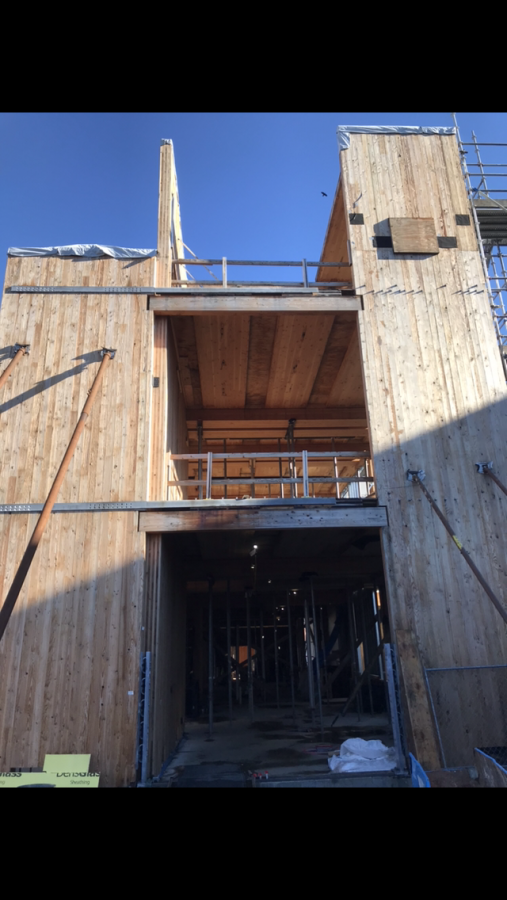New Peavy Hall design to showcase industry’s future
January 7, 2019
In early 2019, OSU will have a new forestry building, complete with “rocking wood.”
It will have the same name – Peavy Hall – as the previous forestry building before it, which was torn down almost two years ago. According to Geoff Huntington, director of strategic initiatives at OSU, this building will display a unique type of design with structural integrity needed to allow the building to be reoccupied after an earthquake. The new Peavy Hall will include a new type of engineered plywood and cross laminated panels, along with a variety of wood products all sourced within 300 miles of campus. Those involved with the design aimed to use a new type of material to improve sustainability and increase earthquake resistance.
“It has been our intention to demonstrate the capabilities and the future of our important wood products industry here in Oregon,” Huntington said.
At the start of this project, many questions remained regarding the qualities of the unique wood being used in the new Peavy Hall. Arijit Sinha, associate professor of renewable materials at OSU, conducted many tests on the material, called mass plywood panel (MPP). It is made up of sheets of wood layered together parallel to one another, and sometimes perpendicular. It is able to be stacked higher than other forms of plywood attributable to the new infrastructure invested in by Freres Lumber Company, MPP’s manufacturers, as well as the design of the panels. MPP has also been shown to have a strong ability to withstand seismic events and has performed well with cyclic loads, according to Sinha.
MPP is shipped in smaller portions than what it is used in, and Sinha and his team of undergraduate and graduate students had to make sure the product could function as promised once assembled. A display near the construction site explains that the “rocking wood technology” in MPP creates stronger buildings with more secure foundations and with less repairs needed after natural disasters.
The term “rocking wood” is used to describe the cross-laminated timber used in making MPP, because it can counter the pressure given by strong winds or earthquakes.
In the event of an earthquake or intense winds, the rods would cause the walls to sway back and forth without breaking, repositioning themselves to their original stance after the incident. When the construction of Peavy Hall is complete, it will be the first building in the United States to feature rocking wood.
Most of the wood’s strength comes from the connected foundations. The foundation of the new Peavy Hall is made up of concrete, with self-centering rods that run through the timber in the shape of the letter U.
Sinha believes there are many advantages to this type of wood, including sustainability and economic stimulus.
“Wood is a renewable material with lower embodied energy and carbon footprint than other alternative materials and hence, is a natural choice for buildings with enhanced sustainability goals,” Sinha said. “Mass timber elements such as MPP have high strengths to weight ratio which is a big advantage. MPP is coming from local producers in the region who by virtue of establishing these respective manufacturing facilities has created jobs and provided a huge economic driver in a predominantly rural area.”
Andersen Construction Agency, graduate students, OSU professors and many volunteers from inside and outside of the university have been working to help make this project happen. Although there have been bumps in the road, the new Peavy Hall will be open to the publicby February 2019.










































































































